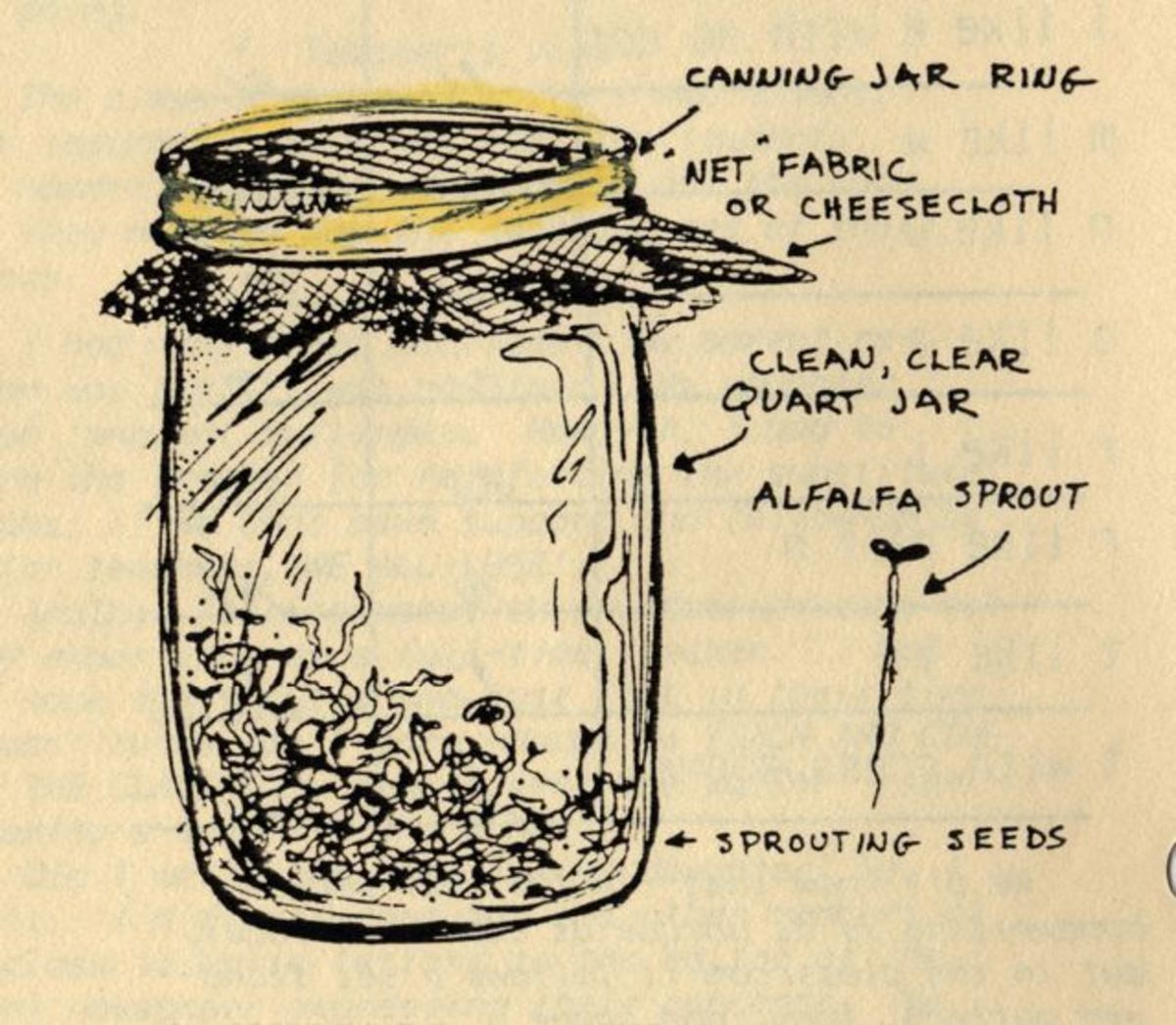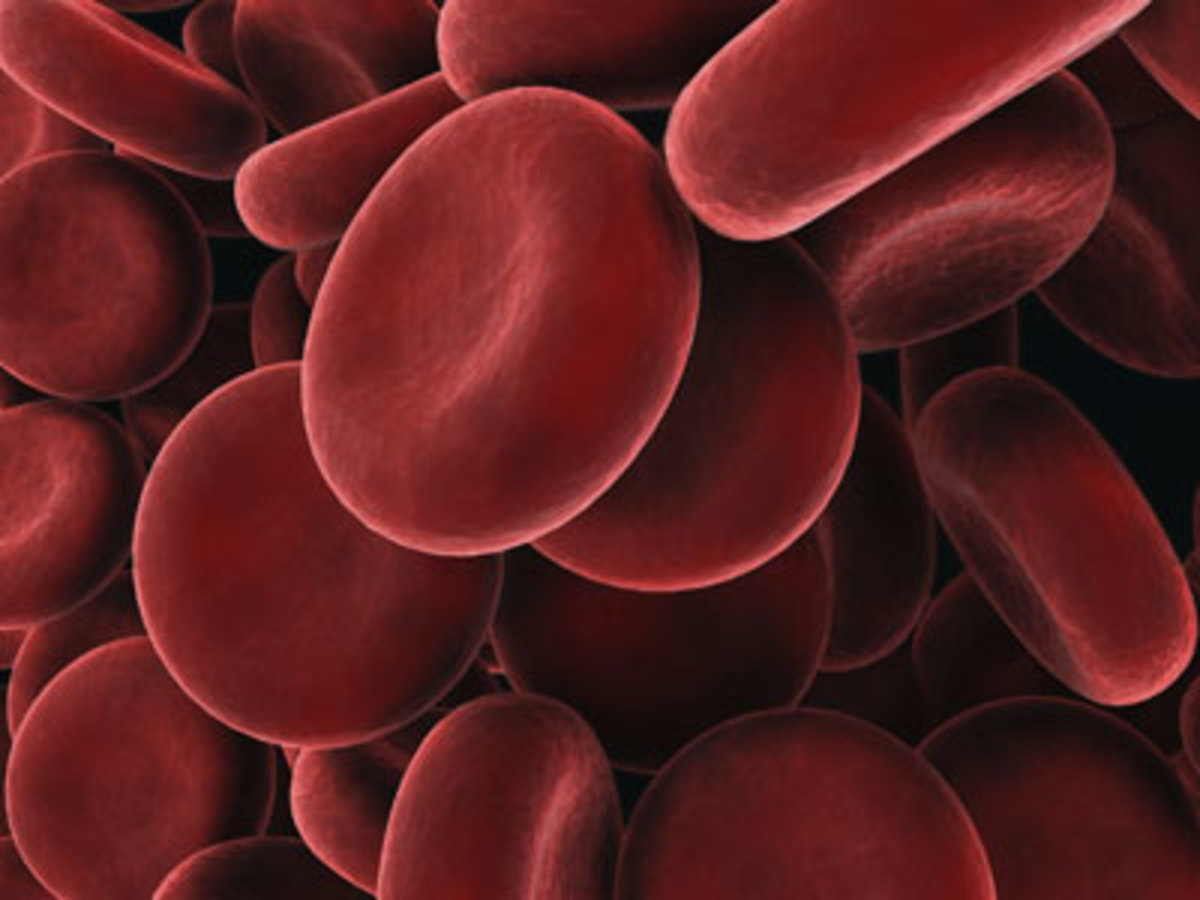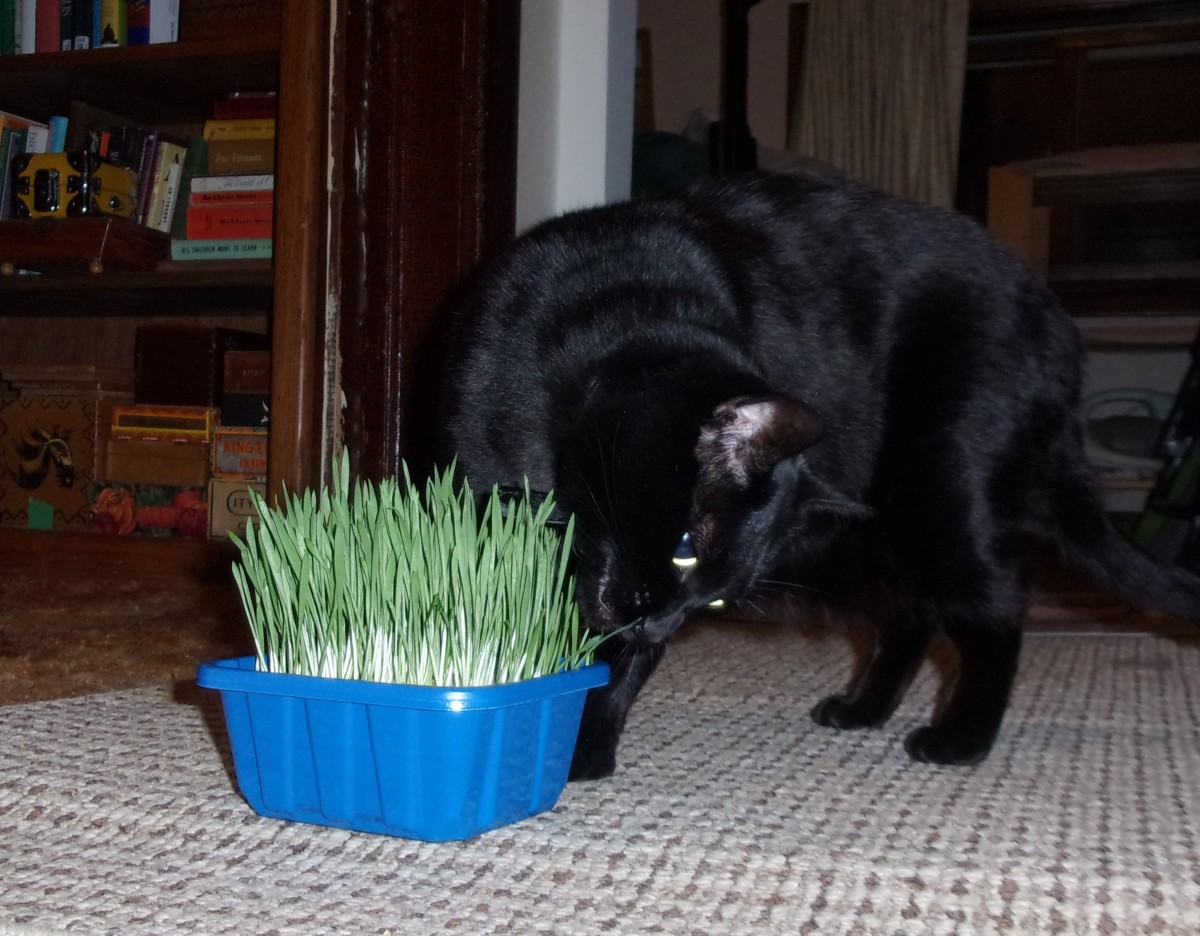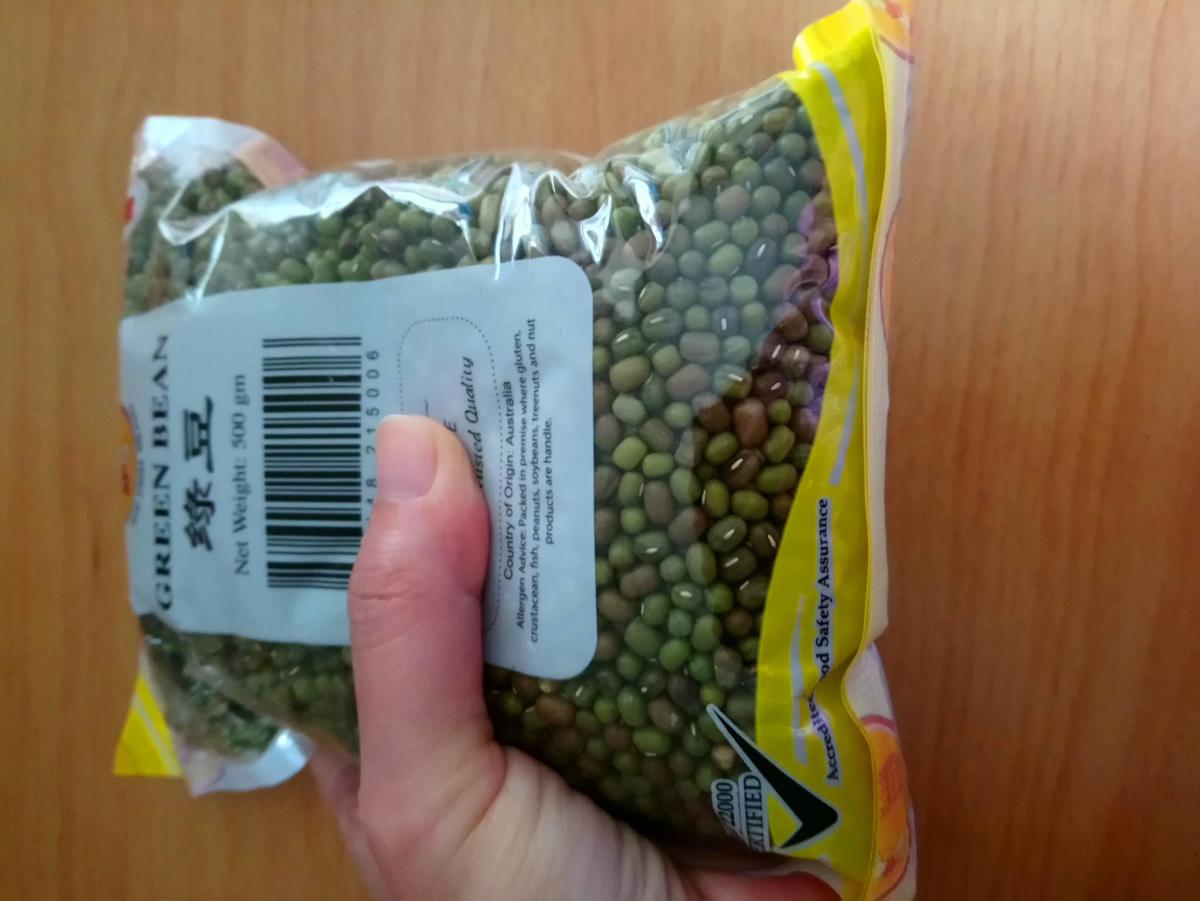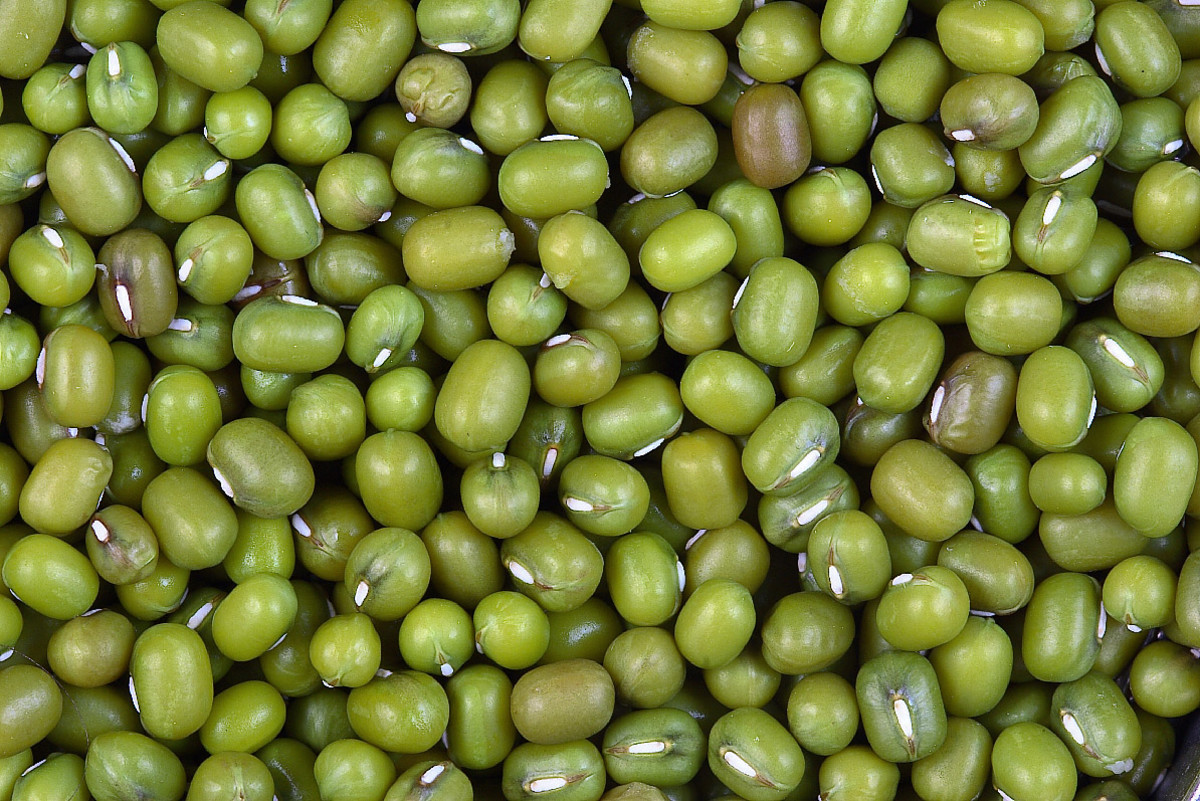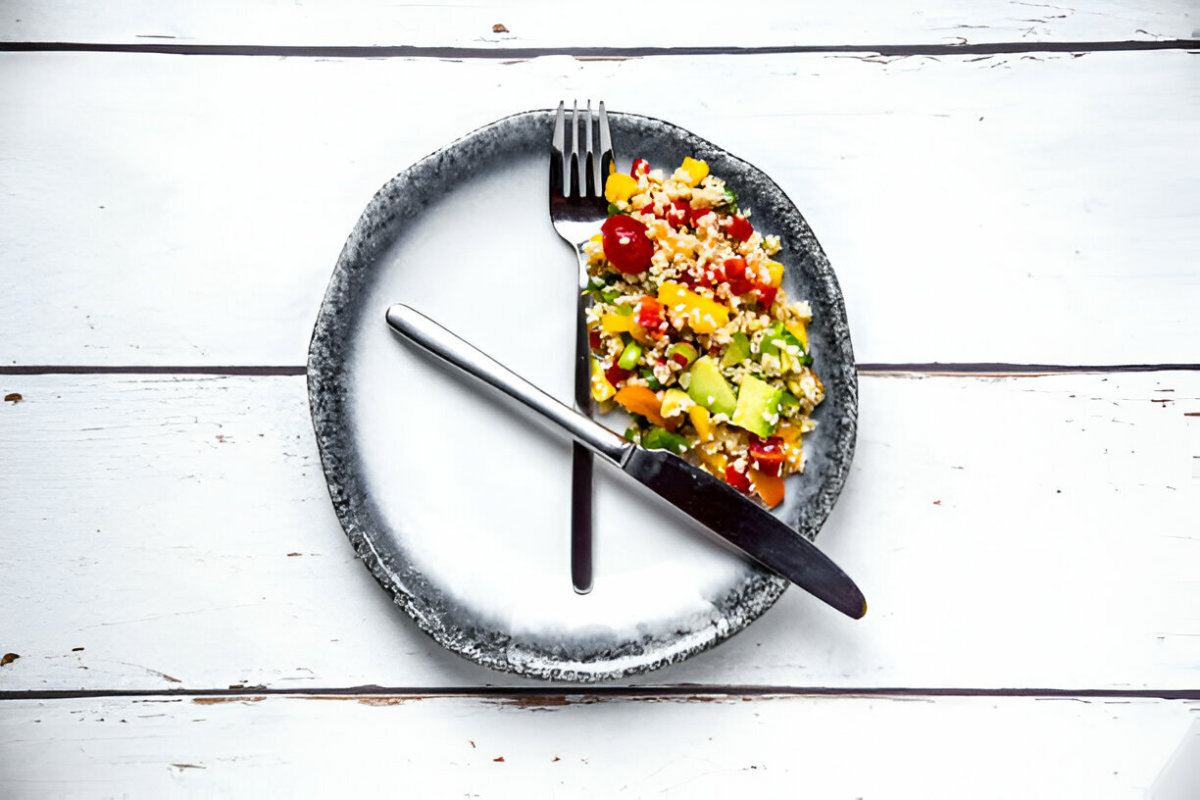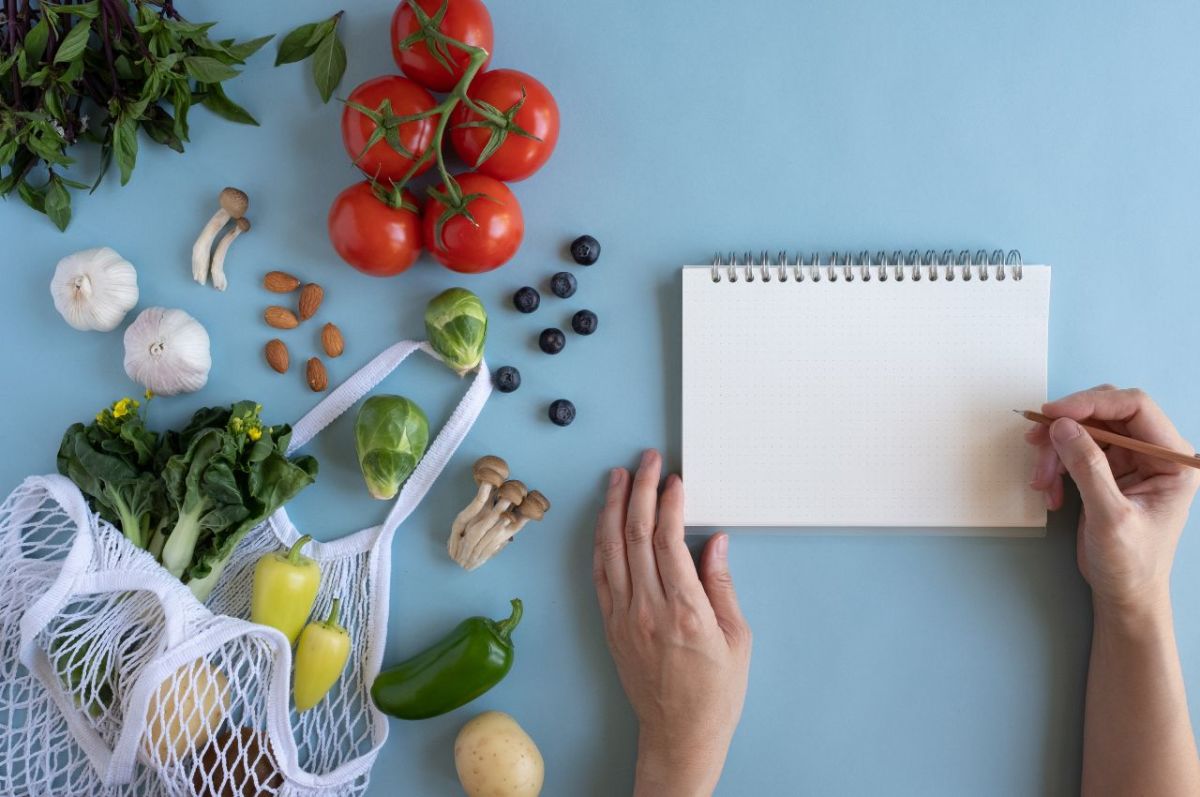Beansprouts: Grow Your Own!
Fresh Mung Bean Sprouts
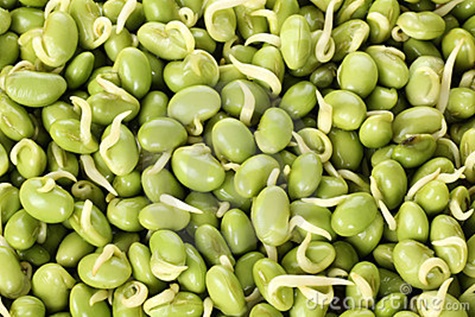
High in Nutrients
Beansprouts (mung bean) are a superfood of nutrition. They contain no fat, no cholesterol, but they are high in both fiber and protein,
Cooked mung beansprouts have only 31 calories per cup, composed of about 60% carbohydrate, 30% protein, and 4% fat. They are low in sodium and somewhat high in potassium, and they are packed with B vitamins, vitamin K, and many other dietary minerals, such as iron and calcium.
Beansprouts, from mung beans, are often used in stir-fried dishes, such as Chop Suey and Chow Mein. You can buy regular and organic mung beans online or at your local grocery store starting at about $4 per pound.
My Experience Growing Sprouts
I first tried my hand at growing mung bean and alfalfa sprouts back in the '80's. Health food and exercise was all the rage. It seemed like everyone was going to the gym -- including me.
I started my vegetarian regimen during this time and was reading a lot of articles about health food in Prevention magazine and Vegetarian Times.
Growing sprouts was a natural progression to my health food phase, and it was fun. It is also an easy way to get nutritious home grown beansprouts into your diet. I use them in salads, sandwiches, and stir-fry dishes, but you can add them to any food for extra crunch.
Follow my step-by-step guide to growing your own mung beansprouts (Click to Tweet) below, and enjoy them with your family in about 4 days.
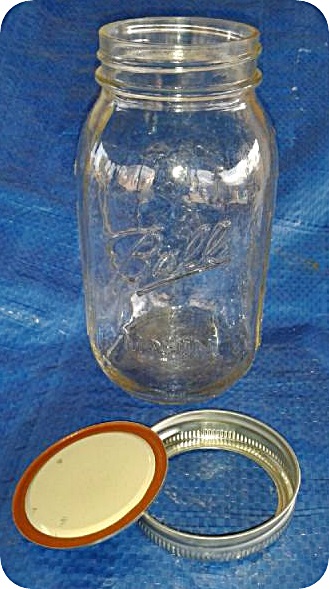
Things to Have Ready
- Mung beans, raw
- Mason jar with screened lid: You need to buy a quart sized Mason jar with a metal lid. You can find Mason jars online or at your local grocery store. Mason jar lids have 2 parts: the ring and the seal.
- Buy screen material. If you already have it, get it out and make a rinsing lid for your Mason jar. (You must rinse sprouts 2 - 3 times a day to keep them from drying out.)
- Separate the seal from the ring and replace it with a piece of screen to fit the ring. [Or you can use a commercial lid made especially for sprouting seeds.]
Sprouting Jar Screened Plastic Lid

Growing Time & What To Have Ready Before You Start
Time: Growing beansprouts takes about 4 days from bean to sprout. We wait until the beansprouts have at least 2" tails (roots) before harvesting.
Difficulty: Easy
Cost: From $15
Materials:
- Mung beans
- Tap water
Tools:
- 1 Mason jar
- 1 metal lid with screen
Mung Beans to Sprout
Instructions for Sprouting Your Mung Beans
- Open your dry mung beans and pour about 1/2 cup of mung beans into your clean, dry Mason jar.
- Pour enough water over the beans to cover them and add an extra inch of water. Place your screened lid back on the jar and let the beans soak for 6-8 hours.
- After soaking the beans, rinse them with water. Be sure to swish the water around the beans, so they are well rinsed.
- Cover the rinsed, drained mung beans with the screened lid. Then place the jar on its side in a cool, dark place.
- Rinse the beansprouts in the morning, mid-afternoon, and before bedtime to keep them from drying out. Sprouts must be kept moist, but not wet (or they will rot).
- Note: There are commercial sprouting jar stands available online, but I used to place the jar on its side in a dark cupboard and it worked fine.
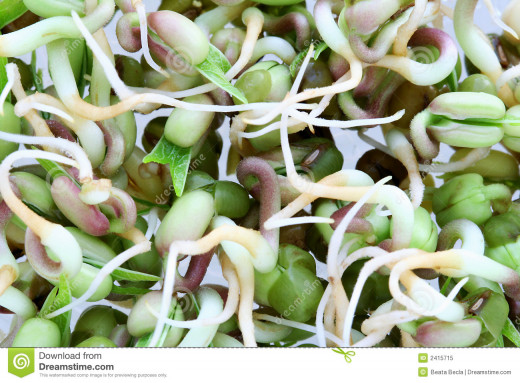
When Are My Sprouts Ready to Eat?
When: Mung beansprouts are ready when they have a 2" tail or after 3 to 4 days.
How to Store: Pour the mung bean sprouts into a container or plastic ziplock bag and store in the refrigerator.
How Long Will They Keep In Refrigerator?
Beamsprouts keep for up to 7 days.
Time-Elapsed Beansprout Germination
Mung Beansprouts Nutritional Values
| Nutrition Facts | |
|---|---|
| Serving size: 1 cup | |
| Calories | 31 |
| Calories from Fat | 0 |
| % Daily Value * | |
| Fat 0 g | |
| Saturated fat 0 g | |
| Unsaturated fat 0 g | |
| Carbohydrates 17 g | 6% |
| Fiber 2 g | 8% |
| Protein 3 g | 6% |
| Cholesterol 0 mg | |
| Sodium 6 mg | |
| * The Percent Daily Values are based on a 2,000 calorie diet, so your values may change depending on your calorie needs. The values here may not be 100% accurate because the recipes have not been professionally evaluated nor have they been evaluated by the U.S. FDA. | |
Sprouting Mung Beans in a Jar
Please Rate My Page
© 2014 Miriam Parker


